Glass is an incredibly common material today. You can find it anywhere, from your kitchen to the promotional aisle in the supermarket. However, few people know that in the early days of glassmaking, it was considered a material reserved for kings.
Thousands of years ago, the pharaohs of ancient Egypt always wanted to keep glass around them. Even in death, glass was chosen to be part of their burial items.
Archaeologists discovered in the tomb of King Tutankhamun a golden mask inlaid with blue glass. There was also a decorative palette and two blue glass headrests. It may sound strange, but these might have been the pillows that supported the king’s head when he was alive.
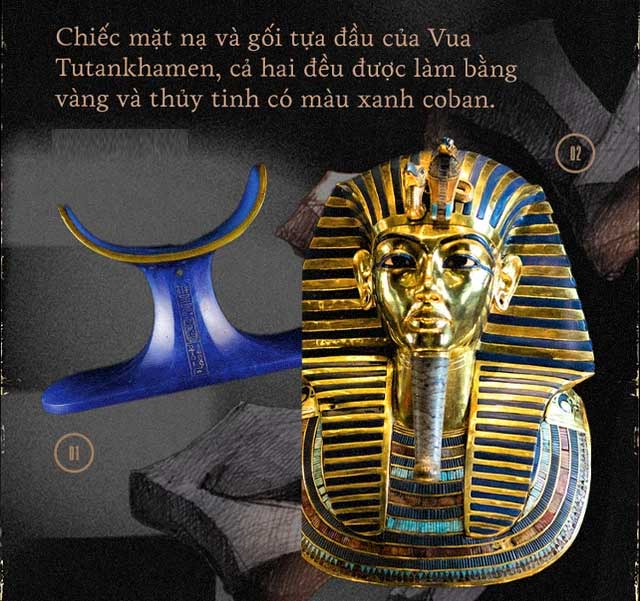
Explaining the preference for glass in ancient Egypt, archaeologist Andrew Shortland from Cranfield University in the UK stated: Egypt was a desert world filled with the golden and brown hues of sand.
During the late Bronze Age, the introduction of colored glass created vivid highlights alongside precious stones. The ancient Egyptians were able to produce glass in blue, turquoise, and purple. In their material hierarchy, glass was only outranked by silver and gold. In some respects, it was also regarded as a type of gemstone—a man-made gem.
This means that unlike stone, which is passively mined from natural deposits, glass is a material that humans actively create. But where did the ancients first produce glass?
Which civilization has the honor of holding the “patent” for this wonderful material? This question has puzzled archaeologists for years.
Only in recent decades have advanced materials science techniques allowed them to reanalyze excavated artifacts and gradually fill in the story of glass in the past.
This not only clarifies the origins of glass but also opens a window into the lives of artisans, traders, and kings during the late Bronze Age, as well as the intercontinental connections between them.
Glass in Antiquity
Glass, both in ancient and modern times, is a material made from silicon dioxide, commonly known as silica.
This brittle and hard material is characterized by its atoms arranged in a disordered manner. For example, quartz also originates from silica, but its atoms are fixed in evenly spaced positions according to a repeating pattern. Glass, on the other hand, has molecules consisting of one silicon atom bonded to two oxygen atoms arranged in a very chaotic manner.
The earliest glass beads date back to the third millennium BC. However, it wasn’t until the end of the Bronze Age—around 1600 to 1200 BC—that the use of glass truly flourished in Egypt, Mycenaean Greece, and the civilization of Mesopotamia, which now encompasses modern-day Syria and Iraq.
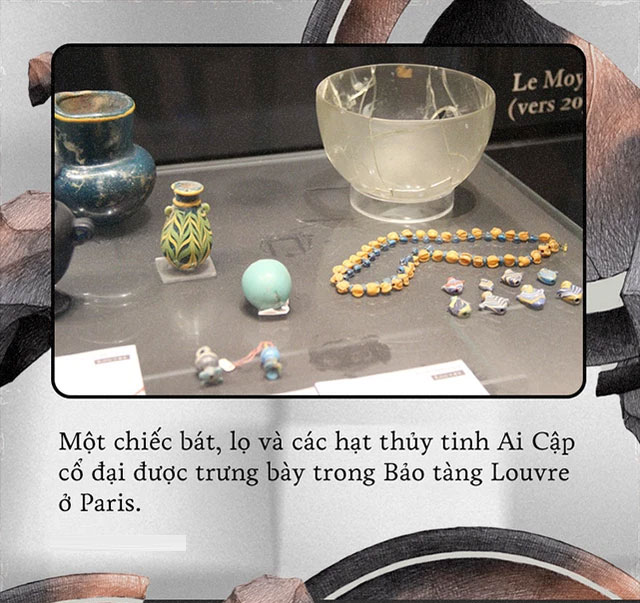
Not as transparent as it is today, ancient glass was often opaque and saturated with color. The silica used to make glass was not harvested from sand but rather from crushed quartz pebbles.
The ancients figured out how to lower the melting temperature of crushed quartz to levels achievable in copper furnaces: they did this by using ash from desert plants that contained high levels of salts like sodium carbonate or bicarbonate. These plants also contained lime—calcium oxide— which, when present, made the glass stronger.
Once they had the material, ancient glassmakers would add coloring agents to the glass, such as cobalt for deep blue or lead antimoniate for yellow. These components were combined during the glass melting process, now serving as important chemical clues that help researchers uncover their origins.
Marc Walton, a materials scientist from Northwestern University in the United States, stated: “We can begin to analyze the raw materials used to produce glass and then hypothesize where they came from in the world.”
Since the 1980s, Polish chemist Alexander Kaczmarczyk discovered that ancient blue glass samples shared a commonality. They all contained elements such as aluminum, manganese, nickel, zinc, and cobalt, which imparted the deep blue color to the glass.
By examining the relative quantities of these components, Kaczmarczyk traced their origins to specific oases in the Egyptian desert, where cobalt ore was mined and utilized.
Continuing where Kaczmarczyk left off, Shortland began to investigate how the ancient Egyptians worked with those cobalt ores. Being a sulfate-containing material also known as alunite, cobalt should not have been able to combine with glass.
However, in the laboratory, Shortland and colleagues recreated a chemical reaction that late Bronze Age craftsmen may have used. This was a very sophisticated reaction that allowed them to replicate the deep blue color in glass similar to that of ancient Egyptian glass.
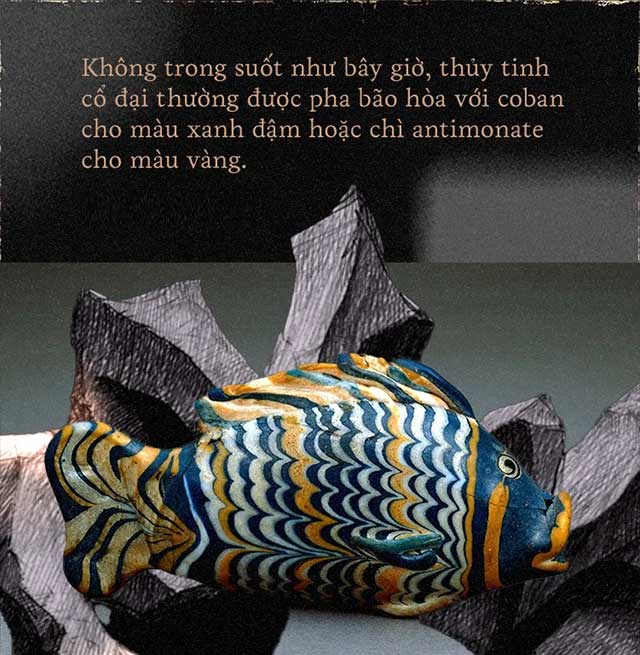
However, advancements about 20 years ago came to a halt. Technical barriers in chemical analysis prevented Shortland and colleagues from analyzing an archaeological artifact while keeping it intact.
For instance, to test an ancient glass vessel, scientists had to destroy it, at least by taking a large piece and grinding it down to create multiple samples for testing. Museums, of course, do not accept such actions.
Thus, after decades of discovery, glass samples from ancient Egypt, the Near East, and Greece remained a mystery, seemingly impossible to identify chemically. It was not until the early years of this century that a more advanced materials analysis method emerged, providing deeper insights into the development of glass.
Known as laser ablation inductively coupled plasma mass spectrometry, abbreviated as LA-ICP-MS, this technique uses a laser to extract a minuscule particle of material, invisible to the naked eye, from the sample. “Compared to taking a hammer and asking for a large piece, this is more acceptable from the perspective of museums”, Shortland remarked.
Once the sample is obtained, LA-ICP-MS continues to use mass spectrometry to measure a range of elements, creating a chemical fingerprint for the glass specimen collected by scientists. Based on this method, in 2009, Shortland, Walton, and several other scientists analyzed glass particles dating from the late Bronze Age in Greece.
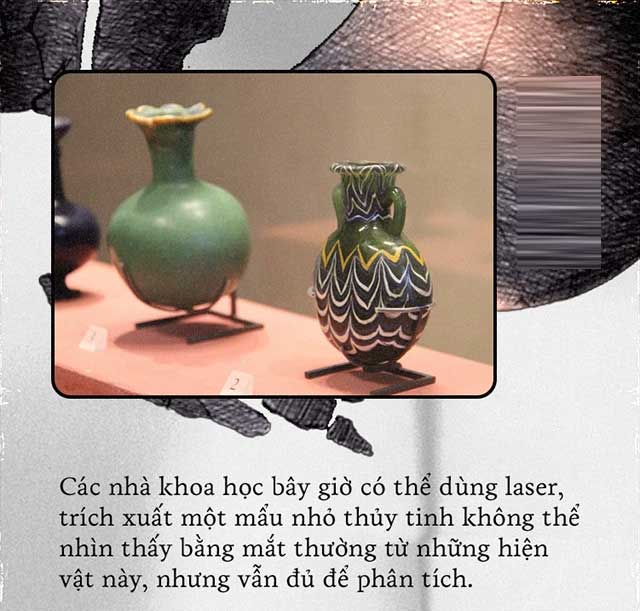
Many scientists previously hypothesized that the civilization of Greece at this time had self-produced glass. However, analysis showed that these glass fragments actually bore traces from the Near East and Egypt.
While Egyptian glass tends to contain high levels of lanthanum, zirconium, and titanium, Near Eastern glass tends to contain more chromium. The findings suggest that ancient Greeks must have imported glass from both regions. Although they may have worked with glass, the Greeks in the late Bronze Age could not or did not produce it themselves.
The Little-Known Origins of Glass
But where was glass first made? For at least 100 years, researchers have debated two main contenders: The Near East and Egypt.
Egypt is famous for its pyramids and tombs, with beautiful and well-preserved glass artifacts. Artifacts found there dating to around 1500 BC initially tilted the hypothesis in favor of Egypt.
However, in the 1980s, researchers pivoted toward the Near East after excavators unearthed an abundance of glass at Nuzi, a town from the late Bronze Age in present-day Iraq. These glass fragments also date back to around 1500 BC.
Yet, during this same period, a reanalysis of archaeological texts revealed that the glass samples at Nuzi were actually younger than previously estimated, by 100 to 150 years. By this time, the glass industry of ancient Egypt appeared to have advanced significantly. Thus, once again, the Egyptian hypothesis gained favor.

But that is not the end of the story. Glass can deteriorate, especially in humid conditions. Items from tombs and ancient towns in Egypt have survived for millennia, preserved in the nearly ideal environment of the desert.
In contrast, Near Eastern glass found in waterlogged tombs of the Mesopotamia region often faced the onslaught of water, which could leach out stabilizing compounds and turn glass into easily flaking powder.
This degraded type of glass is very difficult to identify, and it is possible that many samples went unexamined. “I think many pieces of glass have easily vanished in that way”, Shortland said. “Initial excavations were less concerned with this old flaking glass.”
Therefore, the competition is not truly over, “you really can’t determine where the earliest glass originated at this time”, Shortland noted.
Even more challenging is analyzing where glass was produced. Partly because the materials used to make glass were often exchanged, both in finished form and as raw glass to be crafted into beads and other decorative items.
According to Thilo Rehren, a materials scientist specializing in archaeology at the Cyprus Institute in Nicosia, who has studied the crafting techniques behind artifacts found in the tomb of King Tutankhamun: Glass is a material that helped bind ancient empires together.
Kings often had to gift glassmaking materials to vassals in exchange for goods or their loyalty. These raw materials were part of a treasure trove of various tribute items during the post-Bronze Age alongside ivory, gemstones, wood, animals, and even human slaves…
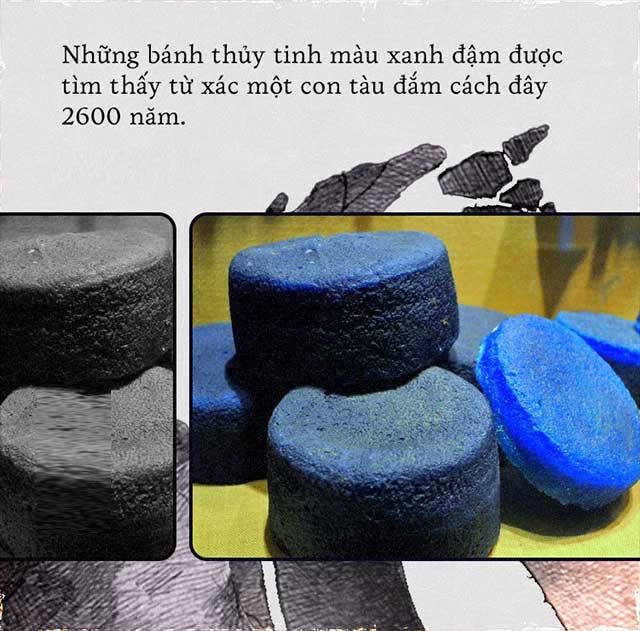
At an excavation site in Gurob, Egypt, believed to have been a palace of the queens, Shortland and colleagues found a necklace of glass beads. The chemical signatures on it indicated that the bead string originated from Mesopotamia with relatively high chromium content.
This implies that the necklace was offered to Pharaoh Thutmose III along with women from the Near East who later became the king’s wives. Once again, the LA-ICP-MS analysis technique “has now helped us begin to see some patterns of exchange between Egypt and neighboring regions,” Shortland remarked.
One of the most striking pieces of evidence for these trade routes was discovered in 1980. Off the coast of Turkey, divers found the wreck of a ship dating back to 1300 BC. Named Uluburun, this ship likely belonged to the Phoenicians and sank during a voyage transporting tribute items.
Among the many items found were large quantities of ivory, copper, tin, and even amber from the Baltic region. Prominently among the recovered items were 175 ingots of unfinished glass. Most of these glass ingots were deep blue, cobalt in color, but there were also those that were purple and turquoise.

Caroline Jackson, an archaeologist at the University of Sheffield in the UK, stated that the artifacts found in this shipwreck could reveal a global economy.
In 2010, Jackson and colleagues broke a few small pieces from three glass ingots to analyze their origins. They reported in a study evidencing that these rough glass ingots originated from Egypt, based on the concentrations of the metals contained within them.
Searching for the Scattered Kilns
Another reason why identifying the site of glass production has become more challenging than ever is that the process is highly efficient. This means that the raw materials used for glass were often maximized and very little was wasted.
Rehren noted that if “you find a finished object, it will of course be taken into a museum.” There is little chance of finding the leftover raw materials.
To search for these treasures outside of museums, Rehren and archaeologist Edgar Pusch had to dive into a flea-infested house in the Nile Delta because they suspected it was an ancient glass production workshop. This site is near Qantir, which once served as the capital of the Egyptian empire around 1200 BC, during the reign of Pharaoh Ramses II.
In the suspected workshop, Rehren and Pusch did not find finished glass, but they did discover ceramics that appeared to be molds for holding molten glass. Inside these ceramic molds was a layer rich in lime, which would act as a non-stick barrier between the glass and the pottery, allowing ancient artisans to easily lift the glass out.
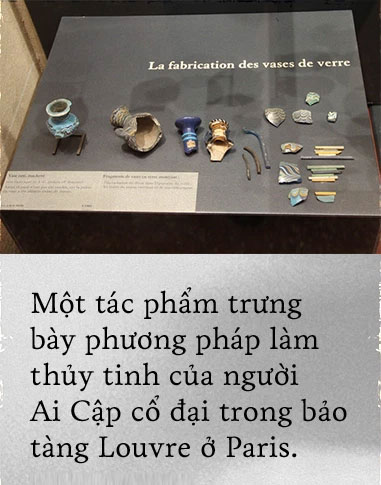
Here, Rehren and Pusch were also fortunate to find a jar containing a form of semi-finished glass that was white and frothy. Based on the color of the ceramic molds, Rehren and Pusch estimated that the glass had undergone temperatures in these furnaces of around 900°C.
This is the temperature at which ancient artisans melted raw materials until they formed glass. Notably, some of the pots were dark red and black, indicating they were heated to temperatures above 1,000°C, high enough to completely melt the glass and achieve an even color. Rehren and Pusch found a few remaining pieces of red glass, which were likely dyed with copper.
“We may be the first to identify evidence of an ancient glass production kiln,” Rehren said. “Previously, no one knew what a glass production kiln from that time looked like.”
Continuing this line of investigation, Rehren and colleagues went on to find similar glassmaking kilns and production sites in various locations, including Amarna, an ancient desert city that was the capital of the Akhenaten empire in the 1300s BC.
Rehren discovered an interesting pattern: The kilns of the Amarna people only produced finished glass that was cobalt blue. However, at Qantir, where copper was also produced for making bronze, excavated crucibles showed that glass here was primarily red.
At Qantir, Egyptologist Mahmoud Hamza even excavated a large red glass ingot that had been corroded in the 1920s. And at a site called Lisht, glass bowls contained fragments that were primarily turquoise.
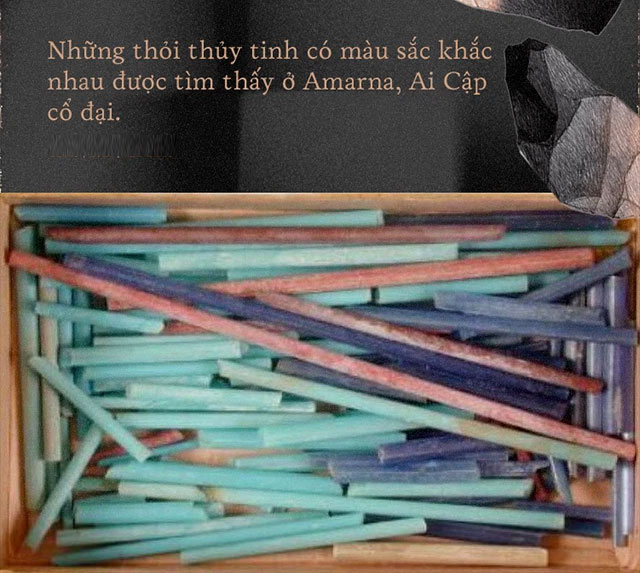
Rehren noted that monochrome glass found at each site suggests that each workshop specialized in making one color of glass. If multi-colored glass ingots were found at the same site, it is likely they were made from colored ingots imported from elsewhere during trade.
Archaeologists continue to pursue the story of glass in Amarna, in some cases carefully verifying the discoveries of earlier archaeologists. For example, in 1921-22, a British team led by renowned archaeologist Leonard Woolley conducted a major excavation in Amarna.
“To put it bluntly, he dug up a mess,” Anna Hodgkinson, an Egyptologist and archaeologist at the Free University of Berlin, remarked. Focusing only on the larger discoveries, Woolley overlooked the scattered glass fragments.
This prompted Hodgkinson to organize a follow-up excavation in 2014-2017 to collect them. In the new study, his team found beads and glass rods scattered throughout the excavation area in Amarna.
Some glass objects were found near ancient households of relatively low status, but they were not artisans as their homes did not have kilns. This discovery is shocking because possessing glass in ancient times was also a symbol of status and power.
Hodgkinson suspects that this finding might be evidence that glassmaking was perhaps less exclusive than previously thought by researchers. Perhaps lower-class individuals did not have much glass, but they still participated in its production and managed to obtain glass in some way.
Evidence from an ancient Egyptian painting shows that a small glass-blowing furnace only required two workers to operate. They used blowpipes to continuously maintain the fire in the furnace, a manual method proven capable of raising temperatures high enough to melt small pieces of glass.

Hodgkinson speculates that even women and children might have participated in this process, as small furnaces were depicted in large numbers, requiring many people to maintain their fires.
Rehren is also reconsidering the hypothesis that glass was reserved for royalty. In trading towns of the Near East, there was an abundance of glass, and a significant amount was shipped to Greece.
“To me, glass does not seem like a tightly controlled royal commodity”, he stated. “I believe that in 5 to 10 years, we will have new discoveries to argue that glass was a costly and specialized item, but not a tightly controlled one.” This material was considered elite, but it wasn’t only for royal use.
Thus, as archaeological sites continue to be searched, scientists uncover new findings every day. Each discovery shapes a different narrative about the origins and prevalence of glass in antiquity. Rehren warns against certainty in the conclusions we have drawn so far.
Did glass originate in Egypt or the Near East? Was it a material for royalty, or could common people use it as well? The answers must be supported by careful evidence and reasoning.
“In the process, you will get contradictory information and differing opinions. All these fragments of information, like shards of glass, can be assembled in various ways to create different pictures”, Rehren concludes.





















































